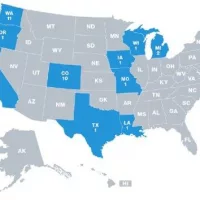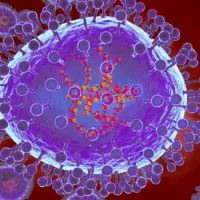
ozgurdonmaz/iStockBY: DR. ALEXIS E. CARRINGTON, ABC NEWS
(NEW YORK) — With fall around the corner and novel coronavirus cases still prevalent throughout the country, experts are bracing for what some have called a “twindemic” of COVID-19 and the flu.
Although these are two very different viruses, experts are now exploring what might happen if people get COVID-19 and the flu at the same time, and whether being ill with one virus might make you more susceptible to the other.
“It is certainly possible, although we aren’t clear how coinfection occurs,” said Dr. Jay Bhatt, an ABC News contributor and former chief medical officer of the American Hospital Association. “We will learn more as we get into the flu season.”
“Limited data suggests that is possible, but much more work needs to be done,” added Dr. John Brownstein, an epidemiologist, ABC News Medical Contributor and Boston Children’s Hospital’s chief innovation officer.
In all likelihood, being infected with both viruses at the same time would be more dangerous than just one. And experts warn that older Americans — already more vulnerable to both COVID-19 and the flu — may be particularly at risk. That’s why, especially this year, older adults are strongly encouraged to get a flu shot.
“There have been cases of coinfection and the result is far worse than the impact of either of the viruses alone,” Brownstein said.
A study published earlier this year in the Journal of the American Medical Association found that 20% of patients were infected with another respiratory virus in addition to COVID-19, including one who had the flu — showing it is a possibility.
“We could see rising COVID cases during flu season and some of that may depend on how effective we are at maintaining consistency in our prevention behaviors we know work,” said Bhatt.
Although COVID and influenza are different viruses, they both spread between people in close contact, which occurs more often as the weather gets colder.
“Increased indoor interaction and decreased humidity are potential factors that lead to a broad rise in respiratory illness,” said Brownstein. “The concern is that we have these rising epidemics at the same time posing both increased individual risk and a deepening strain on health care capacity.”
However, limited evidence from Australia, which is in the midst of its own flu season, seems to indicate that social distancing for COVID-19 is helping curb the spread of the seasonal flu.
“There is a potential silver lining,” said Brownstein, “that the current efforts around social distancing and mask wearing may have an impact on influenza transmission as well.”
When it comes to the effects of COVID-19 and influenza on children, more research is needed to see how likely it is for someone to become infected with COVID-19 and the flu at the same time.
Although most children appear to be relatively unharmed by COVID-19, they are more vulnerable to the seasonal flu.
“The risk of complications for healthy children is higher for flu compared to COVID-19,” said Bhatt. “However, infants and children with underlying medical conditions are at increased risk for both flu and COVID-19. We know that if you are immunocompromised and in close contact with people, you increase risk of transmission and being infected.”
Another challenge this flu season is that while COVID-19 and the flu are very different viruses, they often create similar symptoms.
When it comes to the effects of COVID-19 and influenza on children, more research is needed to see how likely it is for someone to become infected with COVID-19 and the flu at the same time.
Although most children appear to be relatively unharmed by COVID-19, they are more vulnerable to the seasonal flu.
“The risk of complications for healthy children is higher for flu compared to COVID-19,” said Bhatt. “However, infants and children with underlying medical conditions are at increased risk for both flu and COVID-19. We know that if you are immunocompromised and in close contact with people, you increase risk of transmission and being infected.”
Another challenge this flu season is that while COVID-19 and the flu are very different viruses, they often create similar symptoms.
“While the flu vaccine is broadly recommended each year, this year public health is going to be making an extra push to increase uptake,” said Brownstein. “Anything we can do to help protect our already strained health care system, the better.”
Bhatt agreed that as we move into flu season, COVID-19 mitigation strategies will become more important than ever.
“Mask up, watch your distance and wash your hands,” said Bhatt.
Alexis E. Carrington, M.D., is a dermatology research fellow at the University of California, Davis and a contributor to the ABC News Medical Unit.
Copyright © 2020, ABC Audio. All rights reserved.















